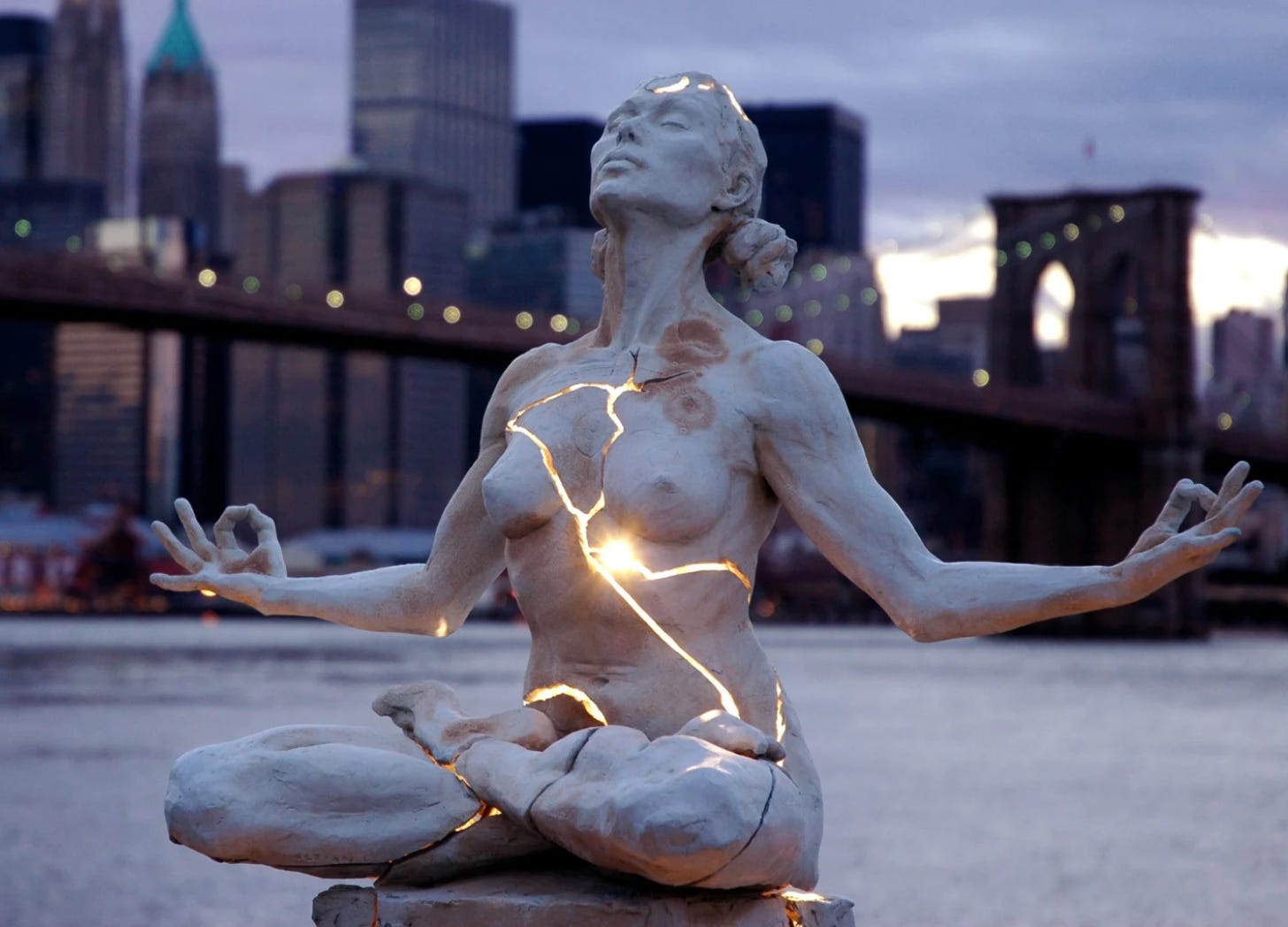The Beauty of Imperfection
Seeing beauty not despite flaws, but because of them…
The song Anthem by Leonard Cohen contains one of the truest, most beautiful lines ever written:
There is a crack in everything. That's how the light gets in.
Life can feel like a loop every now and then. Time slips away as you chase goals, and you temporarily forget the simple joy of losing yourself in an album or a book. I fall into this trap more often than I’d like. Then, out of nowhere, a line pulls you out of the monotony, and you suddenly remember what it feels like to be deeply moved by art.
Song lyrics, much like poetry, carry a strange kind of magic. Sometimes they manage to say what we cannot. As Philip James Bailey wrote: “Poets are all who love — who feel great truths, and tell them.”
Whatever you’re feeling, someone, somewhere, has felt it too, and put it into words.
Cohen’s line points out that imperfection is universal. But it also carries hope — not despite the flaws, but because of them. Light enters through the cracks. Strength rises from struggle. Or, as Keith Richards once said:
That's the little grit that makes the pearl in the oyster. It's that little irritation occasionally that produces the pearl.
Reminder: This is a reader-funded publication focused on spreading beauty, and it depends on your support to keep going.
Upgrade your subscription for just a few dollars a month to help our mission and access members-only articles 👇🏻
Imperfection makes art breathe: an unfinished sculpture, a cracked note, a painting alive with loose, trembling strokes. Proof that the act of creation belongs to humans, not machines.
Sometimes perfection is not only the enemy of the good, but imperfection itself carries greater meaning. It reflects our messy, unpredictable lives. In that reflection, we recognize ourselves, and the recognition moves us more than flawless execution ever could.
Beauty, after all, lives in the cracks. In art, as in life, it is the flaws that make it real.
The works you’re about to see are among the most powerful testaments to the value of imperfection:
1. Venus de Milo
The Venus de Milo is an ancient Greek masterpiece, born in part by accident. Her missing arms make her both unique and otherworldly. She is flawless and flawed at once, unbelievably beautiful yet tragically broken. This incompleteness, this unplanned imperfection, invites the mind to fill the voids left by time.
2. Kintsugi
The Japanese practice of repairing broken pottery with gold lacquer doesn’t hide flaws but celebrates them: the cracks become luminous lines, turning damage into a new form of beauty, richer than before. As a philosophy, kintsugi aligns closely with wabi-sabi, the Japanese appreciation for the imperfect and transient.
In Japanese aesthetics, the marks left by use and time are valued rather than hidden. As Christy Bartlett explains:
Not only is there no attempt to hide the damage, but the repair is literally illuminated. The vicissitudes of existence over time, to which all humans are susceptible, could not be clearer than in the breaks, the knocks, and the shattering to which ceramic ware too is subject.
3. Michelangelo’s Unfinished Slaves
The “Prisoners” or “Slaves” by Michelangelo, a series of unfinished sculptures for the tomb of Pope Julius II, appear as figures struggling to free themselves from the marble. I’ve always found them to possess an indescribable, almost overwhelming power.
4. Winged Victory of Samothrace
This Hellenistic sculpture, representing the winged goddess of victory, is missing its head and arms, yet it conveys an extraordinary sense of triumph. You feel it in the curve of her wings, the sweep of her drapery. There is something almost mystical in her presence. The cracks and missing pieces do not weaken her. They sharpen the sense of motion. Like the Venus de Milo, she asks you to finish the story in your mind.
5. Michelangelo’s Rondanini Pietà
Michelangelo’s final sculpture, left incomplete at his death, shows the Virgin Mary mourning over the body of Christ.
Created when Michelangelo was deeply aware of his own mortality, its rough surfaces and blurred lines between mother and son make it seem as though Mary is trying to draw her dead child back into her womb.
Michelangelo passed away before he could complete the work. Yet calling it “unfinished” feels inadequate — it is more a spiritual testament from the greatest artist of all time.
Henry Moore called it “the most moving sculpture ever created by an artist.”
Thanks for reading! A quick reminder: this newsletter runs entirely on reader support. There are no ads, just a passion for sharing beauty. If you enjoy the content, consider contributing a few dollars a month. Your support makes a huge difference — and as a bonus, you'll get access to exclusive articles and the full archive. Thank you!








I agree about the unfinished work of Michelangelo. It reveals both the truth and the limitations of his quotes: “I saw the angel in the marble and carved until I set him free.”
And: “No great work of art is ever finished.”
Helplessly, my pop mind skipped over to an old memory from an early Saturday Night Live Weekend Update: “In a tragic note from Paris, vandals broke into the Louvre Museum last night, and put the arms back on the Venus de Milo.”
Wonderful article James… Enjoyed the sculptures. Some truly timeless.